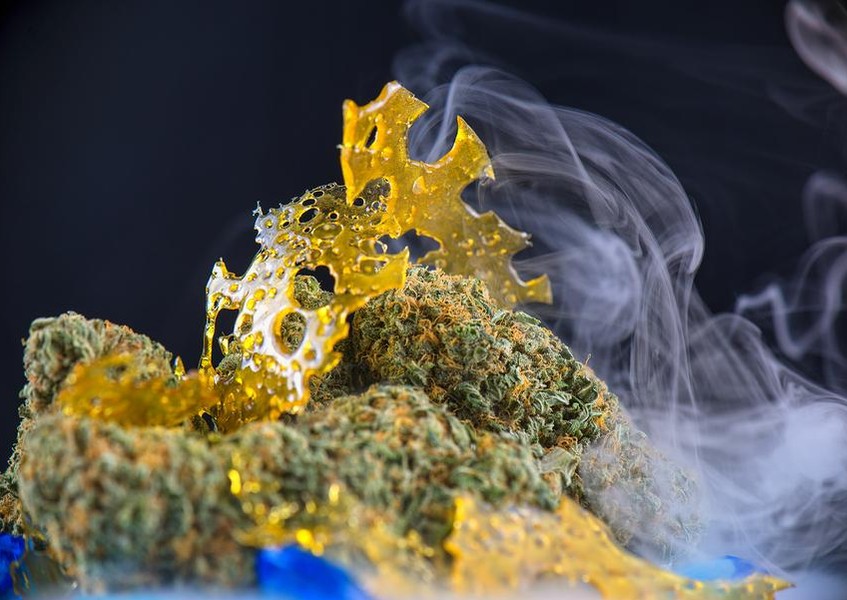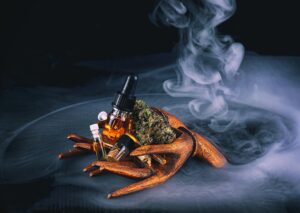Cannabis extracts and concentrates aren’t for beginners. Users need some training, and they produce very different experiences than smoking your first joint.
If you’re thinking extracts or concentrates, you must shop, prepare, use, and think differently about cannabis.
Your guide to extracts
Cannabis extracts are helpful options for those who don’t like to smoke or feel high. The extraction process releases the best benefits of the cannabis strain, so they are often adopted by medical patients.
The extraction process also enables a focus on one benefit of another. For example, the preparation can emphasize sleeping needs, mood improvement, pain relief, or other physical or psychological need.
Extraction allows closer and clearer dosing measures, in solid, semi-solid, powder, and liquid forms, a continuing battle in other consumption methods.
To keep it simple, here’s how it works: healthy cannabis plants are plump with trichomes. These are crystal, resinous, external glands. They are chock full of the cannabis properties you seek. So, the extraction process tries to pull those properties from the plant in different ways producing different products.
Processors use heat or solvents: alcohol, butane, CO2, hydrocarbons, propane, or water. Treatment will eliminate the plant material and leave the chemical compound you prefer. This takes considerable skill and experience and can be explosively dangerous as a DIY project.
• BHO (Butane Hash Oil)
In eliminating the plant material, extraction through butane processing produces higher potency products. And, BHO can pack 80% THC.
BHO is marketed in the black and white market as amber, butane honey oil, dabs, earwax, and shatter. Given the risky processing and ultimate potency, users are encouraged to buy at dispensaries where labeling is clear and complete.
• CO2 oil
Processors create CO2 oil for vaping with an expensive process that uses high pressure and carbon dioxide to strip away the cannabis plant material. It leaves an oil with many of the characteristics of the original plant terpenes. CO2 processing avoids the carcinogenic toxins produced in butane processing.
• Hash
Hash has an ancient history and remains the primary go-to option in cultures throughout the world. Many cannabis pros process their own hash (hashish). There are several ways to do it, but you basically gather the trichomes from the female plant. Under pressure and heat, the trichomes crush into a brick with a cookie texture. And, you can then smoke it, melt it, or eat it.
• Kief
Kief consists of the pollen or powdery crystals on the cannabis plant. It covers your hands when handling plants, but you can save it to grind and store as a potent additive in joints and pipes. Because kief sits on the plant’s exterior at the tip of hairs, you may not notice it as you work with cannabis. But, people use grinders and sieves to gather the kief to use or process into hash.
• Resin
Processors flash freeze buds at their harvest peak to preserve the plant’s specific flavor and aroma in a method called “live resin.” According to HighTimes, “Some of highest terpene concentrates at the 2015 Michigan Medical Cannabis Cup were live resins, but lab tests tell an even more interesting story than that when taken into context. Terpene analyses confirm that live resin indeed has more of a ‘fresh plant’ terpene profile than cured-bud extractions.”
• Shatter
Shatter has the look and feel of flawless amber glass. Users consider it the purest and most potent of extracts. This hardened resin is used for dabbing.
• Tinctures
A tincture is a liquid cannabis extract processed with an alcohol solvent. A few drops under the tongue, it absorbs quickly into the bloodstream. Less potent than other options, it is still easy to use for medical therapies.
• Wax
Wax results from a butane process. Super-potent, it sells as crumble, honeycomb, sap, and sugar. Soft and makeable, the wax is amber orange with less transparency than shatter. Experienced users put wax in their dab rigs or crumble as a topping on their favorite bowl.
Your shorter guide to concentrates
Concentrates result from a different process to remove trichomes, including grinders, screens, ice washer machines, and bubble bags). It uses a mechanical process without heat or pressure. It uses CO2, animal fats, ethanol, isopropyl alcohol, vegetable glycerin or oils, or water instead of butane or harsher solvents.
Users admire the potency and smooth effects of concentrates, especially for medical therapies.
What are the Differences Between an Extract and a Concentrate in the Cannabis World?
This is where there’s some confusion. Because the extraction and concentration processes produce pretty much the same products, people use the words “extract” and “concentrate” synonymously,
Our recommendation is to determine what your objective. If you want a potent high, there are extracts and concentrates that will get you there. If you want to treat specific health problems, you can find that, too. The variety of products offer a variety of consumption experiences. And, some research, good labeling, and a trusted budtender will put the goods in your hand.




